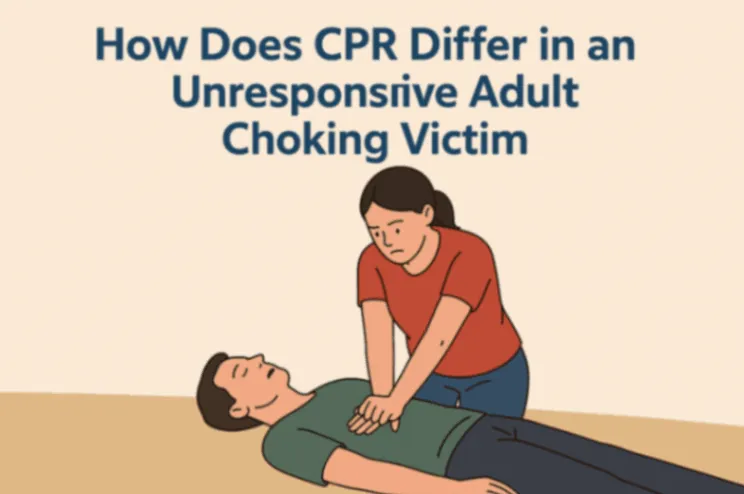When performing CPR, the primary goal is to keep the person’s blood circulating and oxygenated until professional help arrives. However, when dealing with an unresponsive adult choking victim, CPR needs to be adapted to address the choking issue first. This situation requires immediate action, as the airway is blocked, and a regular approach to CPR may not be enough to save the person’s life.
Understanding Choking and Its Risks
Choking occurs when an object, food, or fluid obstructs the airway, making it difficult or impossible to breathe. An unresponsive adult choking victim is someone who has lost consciousness due to lack of oxygen caused by the obstruction. Choking differs from other causes of unresponsiveness, such as cardiac arrest, because it directly involves a blockage in the airway that must be cleared before continuing with CPR. The first priority in this case is removing the obstruction before performing chest compressions and rescue breaths.
Steps for Performing CPR on an Unresponsive Choking Adult
When faced with an unresponsive adult who is choking, the first step is to assess the situation. Check if the person is breathing. If they are not breathing, you should attempt the Heimlich maneuver (abdominal thrusts) to clear the obstruction from the airway. This technique involves standing behind the person, placing your hands just above the navel, and using quick, forceful thrusts to expel the foreign object.
If the Heimlich maneuver is unsuccessful and the person remains unresponsive, begin CPR. However, unlike regular CPR, you will need to check the airway for any obstruction before giving rescue breaths. If the object is visible and reachable, remove it; if not, continue with chest compressions. It’s essential to perform chest compressions at a depth of at least two inches with a rate of 100-120 compressions per minute.
Why CPR for a Choking Victim Differs from Regular CPR
The key difference in CPR for a choking victim is the immediate need to clear the airway. In regular CPR, the focus is on chest compressions and providing rescue breaths to revive the person. However, in the case of a choking victim, the obstruction must be removed first, as airway clearance is essential for the oxygenated blood to circulate properly.
During regular CPR, chest compressions provide blood flow to vital organs, while rescue breaths deliver oxygen. For a choking victim, clearing the airway with the Heimlich maneuver should be the first priority. Once the airway is cleared, you can continue with standard CPR.
The Role of Training and Certification
Proper CPR training ensures that you understand how to handle different emergency situations, including those involving choking victims. Learning CPR with choking protocols can significantly increase the chances of survival for an unresponsive adult. Simple CPR offers comprehensive online CPR, BLS, and First Aid courses that include choking and CPR techniques for both adults and children. These courses are designed to equip you with the knowledge and skills to act quickly and effectively in an emergency.
Conclusion
Knowing how does CPR differs in an unresponsive adult choking victim is vital for anyone who might face such a situation. Understanding the differences between choking and other forms of unresponsiveness, and knowing how to clear the airway before administering CPR, can make a life-saving difference. Whether you are a healthcare professional, a parent, or simply someone wanting to be prepared, get certified in CPR today with Simple CPR. Learn how to save lives, including how to handle choking emergencies.

